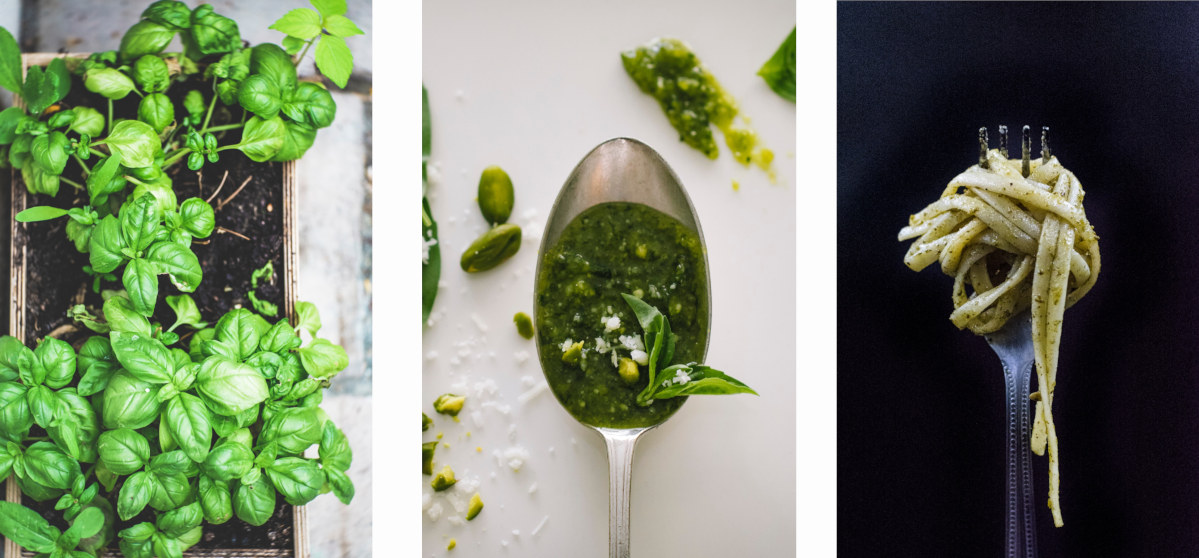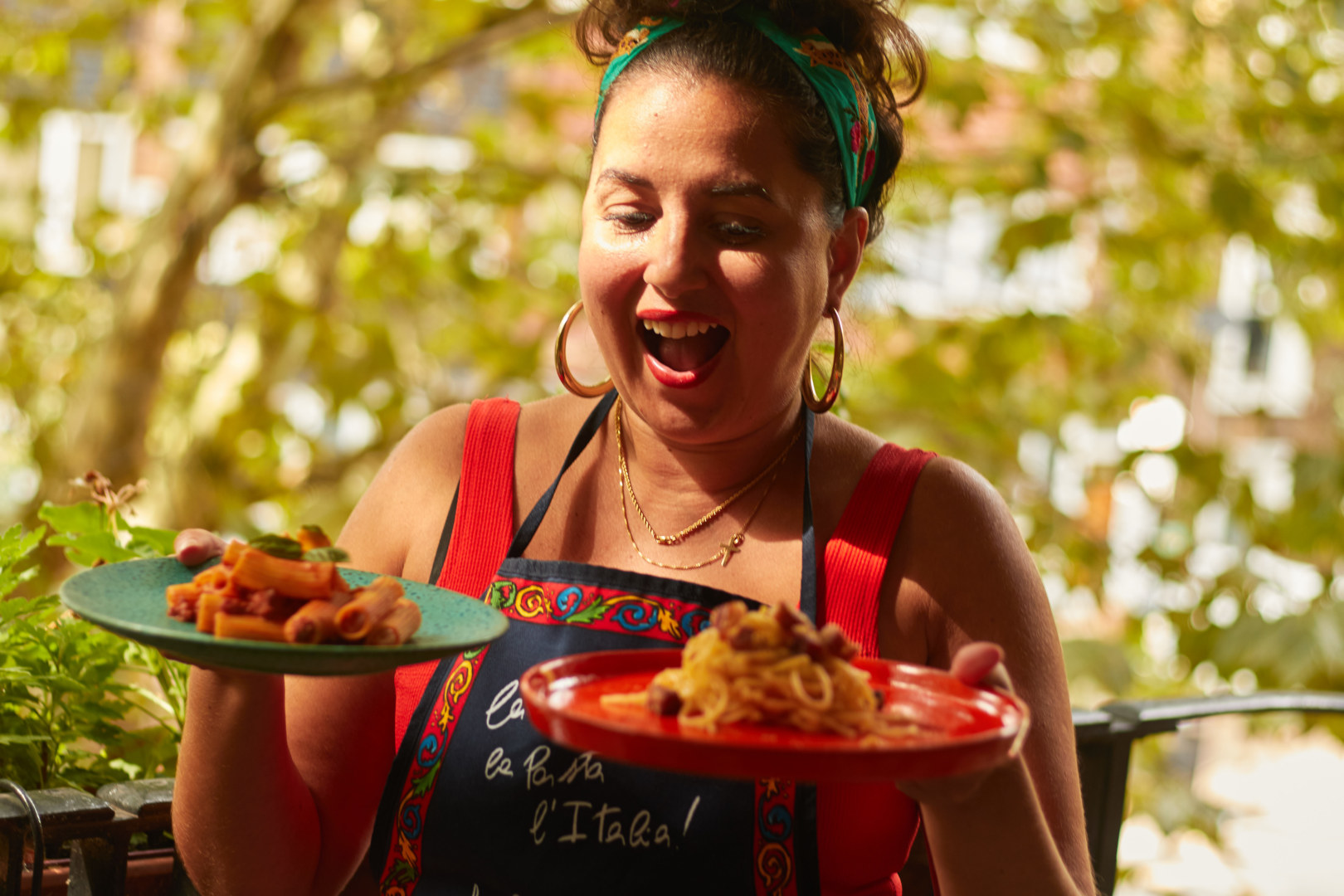Food – Genoa, basil and pesto
Text: Paola Maggiulli | Photos: Unsplash

As my fork twirls, a bright green speckled sauce silkily coats the long, flat strands of my pasta. Sat in a quaint trattoria in central Genoa in the Italian region, Liguria, I enjoy some of the best cooking the city has to offer.
Located in the north-west of the country, bordering France, this Mediterranean coastline is better known as the Italian riviera. However, when it comes to culinary successes, it’s home to a well-known Italian pasta sauce – Pesto Alla Genovese; or commonly known as, basil pesto. Interestingly, the word pesto stems from the Italian verb ‘pestare’, which means ‘to pound’ or ‘to crush’, and that’s exactly how its ingredients are handled.
Originally made in the summer months, sweet, aromatic basil leaves were sealed with olive oil to last till winter. However, over time, the addition of other local, Ligurian produce has led to the well-known delicate flavour enjoyed today.

Traditionally assembled with a pestle and mortar, garlic and pine nuts are first pounded together which helps release their natural oils. Next, basil leaves are added with coarse salt and grounded into a creamy texture. Only then, a salty Italian cheese such as Parmesan or Pecorino Sardo is added. Finally, a drizzle of extra-virgin olive oil helps produce its creamy, silky consistency.
While purists choose this classic method, nowadays the food processor helps whip this up in only a few minutes. With no need to heat up, pesto is usually used to dress cooked pasta, potato gnocchi or even a spoonful can be added to a bowl of minestrone. So don’t be lazy by grabbing that ready-made pesto jar, but recreate a little fresh pesto yourself, and take your pasta game to the next level.

Paola Maggiulli, a British foodie and passionate cook with Italian roots, has a wealth of knowledge when it comes to all Italian food; pasta, pizza, gelato, you name it. On her blog, The Tiny Italian, she shares her delicious recipes with the world. www.thetinyitalian.com Disclaimer: The views and opinions expressed in this column are those of the author and do not necessarily reflect the official policy or position of Discover Southern Europe.
Subscribe to Our Newsletter
Receive our monthly newsletter by email





